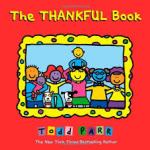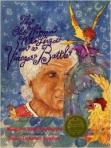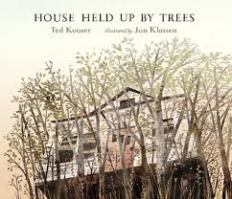
Joelito’s Big Decision
Ann Berlak, ill. Daniel Camacho
Hard Ball Press
August 2015
Copy of the book was provided free by the author for Multicultural Children’s Book Day
Joelito’s family has a tradition of going out for hamburgers at Sam MacMann’s every Friday, but this week their plans fall apart when the fast food workers are on strike, demanding a raise in their wages as part of the Fight for 15 movement. Joelito recognizes his best friend, Brandon, and Brandon’s family among the picketers. Brandon’s parents work at the restaurant and don’t make enough money to support their family. At first Joelito is torn between supporting his friend and carrying on his family’s weekly burger tradition. Ultimately Joelito learns a lesson about the economics of big business and the importance of supporting your friends and community in challenging times, leading him to make his “big decision.”
While Joelito’s Big Decision is a story about friendship and community, it is also a story about the economy and its effect on families. Brandon’s family’s story is one that became all too common after the Great Recession in 2008 – parents lose good factory jobs and are forced to take minimum-wage, low skill jobs; the family has to leave their house and move into an apartment; they don’t have money to take care of the family, all culminating in their participation in the strike. Many kids will be able to relate to Brandon’s family as the effects of the recession continue to be felt today across the country.
The book also includes what we can assume is an immigrant story. Joelito’s mother talks about her family’s humble beginnings picking fruit in horrible conditions, but today, because of demonstrations by the farm workers, they have worked their way up to have a fairly comfortable life. Joelito’s family honors that family history by joining in the demonstration against Sam MacMann’s and eating at a locally owned restaurant instead.
While the book could use one more proofreading and some illustrations’ relationship to the text isn’t always immediately clear, Joelito’s Big Decision addresses important issues and the bilingual English and Spanish text will make the book more accessible for Spanish-speaking children and families.
For teachers and parents, Joelito’s Big Decision provides a good jumping off point for discussion about issues of workers’ rights, the right to assemble, wealth distribution, and the power of the consumer to choose what businesses they support. As always, more information can be found at your local library on all of these topics.
Suggested reading
Side by Side/Lado a Lado: The Story of Dolores Huerta and Cesar Chavez (bilingual English-Spanish) by Monica Brown, illustrated by Joe Cepeda
Brave Girl: Clara and the Shirtwaist Makers’ Strike of 1909 by Michelle Martel, illustrated by Melissa Sweet
Companion activity
In the illustrations of the Sam MacMann’s strike, many people hold up signs with slogans or demands or the reason they are striking. Look at these illustration and think about a cause you are passionate about – for example, animal rights, a better environment, a safer neighborhood, to keep a school or library or park open, etc. If you had a sign at a strike or rally for your cause, what would you write on it? Would it be one word or many? In English or another language? Would it rhyme? Maybe you would include pictures or use a lot of different colors. Practice making your sign on a small sheet of paper. Use crayons or colored pencils or markers. Think about the sign you’ve made. Does your sign get your message across? Does is represent you and your cause?
About Multicultural Children’s Book Day
Multicultural Children’s Book Day is on January 27, 2016.
The MCCBD team’s mission to spread the word and raise awareness about the importance of diversity in children’s literature. Our young readers need to see themselves within the pages of a book and experience other cultures, languages, traditions and religions within the pages of a book. We encourage readers, parents, teachers, caregivers and librarians to follow along the fun book reviews, author visits, event details, a multicultural children’s book linky and via our hashtag (#ReadYourWorld) on Twitter and other social media.
Multicultural Children’s Book day 2016 Medallion Level Sponsors
Platinum: Wisdom Tales Press * StoryQuest Books*Lil Libros
Gold: Author Tori Nighthawk*Candlewick Press
Silver: Lee and Low Books*Chronicle Books*Capstone Young Readers
Bronze: Pomelo Books* Author Jacqueline Woodson*Papa Lemon Books* Goosebottom Books*Author Gleeson Rebello*ShoutMouse Press*Author Mahvash Shahegh* China Institute.org*
Multicultural Children’s Book Day has 12 amazing Co-Host and you can view them here.






